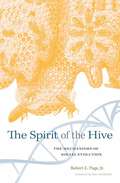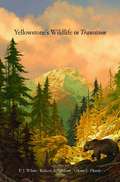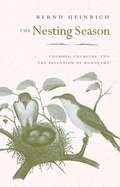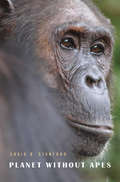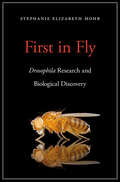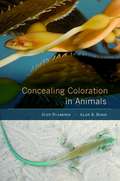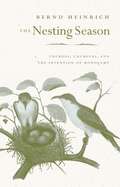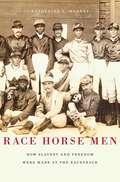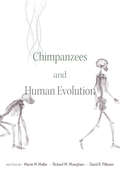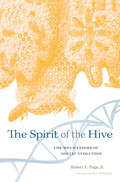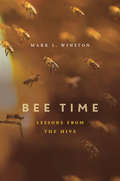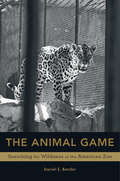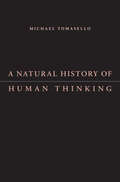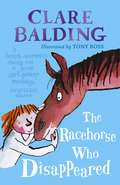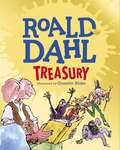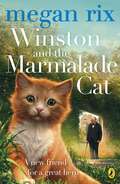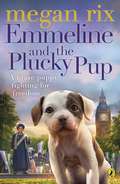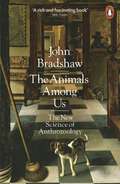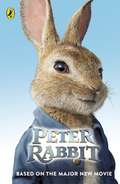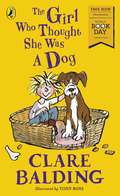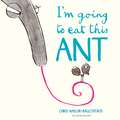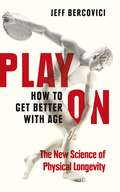- Table View
- List View
The Spirit of the Hive: The Mechanisms Of Social Evolution
by Robert E. Page Jr.How can 40,000 bees working in the dark, by instinct alone, construct a honey comb? Synthesizing decades of experiments, The Spirit of the Hive presents the genetic and physiological mechanisms underlying the division of labor in honey bee colonies and explains how it is an inevitable product of group living, evolving over millions of years.
Yellowstone's Wildlife in Transition
by P. J. WhiteThe world's first national park is constantly changing. How we understand and respond to recent events putting species under stress will determine the future of ecosystems millions of years in the making. Marshaling expertise from over 30 contributors, Yellowstone's Wildlife in Transition examines three primary challenges to the park's ecology.
The Nesting Season: Cuckoos, Cuckolds, And The Invention Of Monogamy
by Bernd HeinrichOne of the world’s great naturalists and nature writers, Bernd Heinrich shows us how the sensual beauty of birds can open our eyes to a hidden evolutionary process.
Planet Without Apes
by Craig B. StanfordCan we live with the consequences of wiping our closest relatives off the face of the Earth, and all the biological knowledge about ourselves that would die along with them? Extinction of the great apes threatens to become a reality within a few human generations. Stanford tells us how we can redirect the course of an otherwise bleak future.
Apes and Human Evolution
by Russell H. TuttleIn this masterwork, Russell H. Tuttle synthesizes a vast research literature in primate evolution and behavior to explain how apes and humans evolved in relation to one another, and why humans became a bipedal, tool-making, culture-inventing species distinct from other hominoids. Along the way, he refutes the theory that men are essentially killer apes--sophisticated but instinctively aggressive, destructive beings. Situating humans in a broad context, Tuttle musters evidence from morphology and recent fossil discoveries to reveal what early primates ate, where they slept, how they learned to walk upright, how brain and hand anatomy evolved simultaneously, and what else happened evolutionarily to cause humans to diverge from their closest relatives. Despite our genomic similarities with bonobos, chimpanzees, and gorillas, humans are unique among primates in occupying a symbolic niche of values and beliefs based on symbolically mediated cognitive processes. Although apes exhibit behaviors that strongly suggest they can think, salient elements of human culture--speech, mating proscriptions, kinship structures, and moral codes--are symbolic systems that are not manifest among apes. This encylopedic volume is both a milestone in primatological research and a critique of what is known and yet to be discovered about human and ape potential.
The Mind of the Horse: An Introduction To Equine Cognition
by Michel-Antoine LeblancHorses were first domesticated about 6,000 years ago on the vast Eurasian steppe, yet only in the last two decades have scientists begun to explore the mental capacities of these animals. In The Mind of the Horse, Michel-Antoine Leblanc presents an encyclopedic synthesis of scientific knowledge about equine behavior and cognition, providing experts and enthusiasts alike with an up-to-date understanding of how horses perceive, think about, and adapt to their physical and social worlds. Much of what we think we know about "the intelligence of the horse" derives from fragmentary reports and anecdotal evidence. Putting this accumulated wisdom to the test, Leblanc introduces readers to rigorous experimental investigations into how horses make sense of their world under varying conditions. He describes the anatomical and neurophysiological characteristics of the horse's brain, and compares these features with those of other species, to gain an evolutionary perspective. A horseman himself, Leblanc also considers the opinions of renowned riding masters, as well as controversies surrounding the horse's extraordinary mental powers that have stirred in equestrian and scientific circles. The Mind of the Horse brings together in one volume the current state of equine research and will likely stimulate surprising new discoveries.
First in Fly: <i>Drosophila</i> Research and Biological Discovery
by Stephanie Elizabeth MohrA single species of fly, Drosophila melanogaster, has been the subject of scientific research for more than one hundred years. Why does this tiny insect merit such intense scrutiny? Drosophila’s importance as a research organism began with its short life cycle, ability to reproduce in large numbers, and easy-to-see mutant phenotypes. Over time, laboratory investigation revealed surprising similarities between flies and other animals at the level of genes, gene networks, cell interactions, physiology, immunity, and behavior. Like humans, flies learn and remember, fight microbial infection, and slow down as they age. Scientists use Drosophila to investigate complex biological activities in a simple but intact living system. Fly research provides answers to some of the most challenging questions in biology and biomedicine, including how cells transmit signals and form ordered structures, how we can interpret the wealth of human genome data now available, and how we can develop effective treatments for cancer, diabetes, and neurodegenerative diseases. Written by a leader in the Drosophila research community, First in Fly celebrates key insights uncovered by investigators using this model organism. Stephanie Elizabeth Mohr draws on these “first in fly” findings to introduce fundamental biological concepts gained over the last century and explore how research in the common fruit fly has expanded our understanding of human health and disease.
Concealing Coloration in Animals
by Judy DiamondColor can attract mates, intimidate enemies, and distract predators. But it can also conceal animals from detection. It is an adaptation to the visual features of the environment but also to the perceptual and cognitive capabilities of other organisms. Judy Diamond and Alan Bond reveal factors at work in the evolution of concealing coloration.
The Nesting Season: Cuckoos, Cuckolds, And The Invention Of Monogamy
by Bernd HeinrichOne of the world’s great naturalists and nature writers, Bernd Heinrich shows us how the sensual beauty of birds can open our eyes to a hidden evolutionary process.
Race Horse Men: How Slavery And Freedom Were Made At The Racetrack
by Katherine C. MooneyKatherine C. Mooney recaptures the sights, sensations, and illusions of America's first mass spectator sport. Her central characters are not the elite white owners of slaves and thoroughbreds but the black jockeys, grooms, and horse trainers who called themselves race horse men and made the racetrack run--until Jim Crow drove them from their jobs.
Chimpanzees and Human Evolution
by Martin N. MullerKnowledge of wild chimpanzees has expanded dramatically. This volume, edited by Martin Muller, Richard Wrangham, and David Pilbeam, brings together scientists who are leading a revolution to discover and explain human uniqueness, by studying our closest living relatives. Their conclusions may transform our understanding of human evolution.
The Spirit of the Hive: The Mechanisms Of Social Evolution
by Robert E. Page Jr.How can 40,000 bees working in the dark, by instinct alone, construct a honey comb? Synthesizing decades of experiments, The Spirit of the Hive presents the genetic and physiological mechanisms underlying the division of labor in honey bee colonies and explains how it is an inevitable product of group living, evolving over millions of years.
Bee Time: Lessons from the Hive
by Mark L. WinstonBeing among bees is a full-body experience, Mark Winston writes. Bee Time presents his reflections on three decades spent studying these remarkable creatures, and on the lessons they can teach about how humans might better interact with one another and the natural world, from the boardroom to urban design to agricultural ecosystems.
The Animal Game: Searching For Wildness At The American Zoo
by Daniel E. BenderTracing the global trade and trafficking in animals that supplied U.S. zoos, Daniel Bender shows how Americans learned to view faraway places through the lens of exotic creatures on display. He recounts the public’s conflicted relationship with zoos, decried as prisons by activists even as they remain popular centers of education and preservation.
A Natural History of Human Thinking
by Michael TomaselloTool-making or culture, language or religious belief: ever since Darwin, thinkers have struggled to identify what fundamentally differentiates human beings from other animals. Michael Tomasello weaves his twenty years of comparative studies of humans and great apes into a compelling argument that cooperative social interaction is the key to our cognitive uniqueness. Tomasello maintains that our prehuman ancestors, like today's great apes, were social beings who could solve problems by thinking. But they were almost entirely competitive, aiming only at their individual goals. As ecological changes forced them into more cooperative living arrangements, early humans had to coordinate their actions and communicate their thoughts with collaborative partners. Tomasello's "shared intentionality hypothesis" captures how these more socially complex forms of life led to more conceptually complex forms of thinking. In order to survive, humans had to learn to see the world from multiple social perspectives, to draw socially recursive inferences, and to monitor their own thinking via the normative standards of the group. Even language and culture arose from the preexisting need to work together and coordinate thoughts. A Natural History of Human Thinking is the most detailed scientific analysis to date of the connection between human sociality and cognition.
First in Fly: <i>Drosophila</i> Research and Biological Discovery
by Stephanie Elizabeth MohrA single species of fly, Drosophila melanogaster, has been the subject of scientific research for more than one hundred years. Why does this tiny insect merit such intense scrutiny? Drosophila’s importance as a research organism began with its short life cycle, ability to reproduce in large numbers, and easy-to-see mutant phenotypes. Over time, laboratory investigation revealed surprising similarities between flies and other animals at the level of genes, gene networks, cell interactions, physiology, immunity, and behavior. Like humans, flies learn and remember, fight microbial infection, and slow down as they age. Scientists use Drosophila to investigate complex biological activities in a simple but intact living system. Fly research provides answers to some of the most challenging questions in biology and biomedicine, including how cells transmit signals and form ordered structures, how we can interpret the wealth of human genome data now available, and how we can develop effective treatments for cancer, diabetes, and neurodegenerative diseases. Written by a leader in the Drosophila research community, First in Fly celebrates key insights uncovered by investigators using this model organism. Stephanie Elizabeth Mohr draws on these “first in fly” findings to introduce fundamental biological concepts gained over the last century and explore how research in the common fruit fly has expanded our understanding of human health and disease.
The Racehorse Who Disappeared (Charlie Bass)
by Clare Balding Tony RossClare Balding's second brilliant adventure for Charlie Bass and her funny family of humans and animals.Life is slowly getting back to normal for Charlie after her reluctant racehorse, Noble Warrior, won the Derby and saved her family from financial ruin. But drama soon returns to Folly Farm when thieves break into the farmyard in the dead of night and kidnap Noble Warrior! With the police baffled and no trace of the prizewinning thoroughbred to be found, Charlie launches her own investigation...
The Roald Dahl Treasury
by Roald Dahl Quentin BlakeThe Roald Dahl Treasury is a delightful collection by and about the World's Number One Storyteller.Four exciting sections - ANIMALS; MAGIC; FAMILY, FRIENDS AND HEROES; and MATTERS OF IMPORTANCE - introduce some of Roald Dahl's most popular characters, from the Enormous Crocodile to the Twits, from the Witches to the BFG, from James to Matilda.Throughout this book, you can delve into stories, poems, memoirs and letters galore all wonderfully illustrated by Quentin Blake as well as other well-known artists, including Raymond Briggs, Babette Cole, Posy Simmonds and Ralph Steadman.This book is the perfect gift for Roald Dahl fans and for all those yet to discover his magic.
Winston and the Marmalade Cat
by Megan RixWinston and the Marmalade Cat is the first in a brand-new series from award-winning author Megan Rix! Full of adventure, fascinating history and super-cute animals, this series is perfect for 6-8 year old readers and fans of Dick King-Smith and Michael Morpurgo.Nine-year-old Harry is desperate for a pet of his own but working at the local animal rescue centre is the next best thing. One day, he's asked to take a very special birthday present to Chartwell, home of the famous Prime-Minister and animal-lover Winston Churchill. During his visit, Harry learns all about Winston's past and his much-loved pets. Will Harry get to meet Winston Churchill and will he ever get a pet of his very own?
Emmeline and the Plucky Pup
by Megan RixMeet the leader of the Suffragettes, Emmeline Pankhurst, and a particularly plucky pup, during a momentous time in history!Alfie can't believe his luck when he is allowed to keep a tiny puppy he finds abandoned on the street. Rascal is cute as a button and has lots of attitude, and Emmeline Pankhurst is thrilled that her ward Alfie has a new friend. Alfie and Rascal deliver messages between the Suffragettes as they organise their 'Votes for Women' campaign. But it's sometimes dangerous work, and it's not long before Alfie and Rascal find out the true cost of the fight. Full of adventure, fascinating history and lovely animals, this is the perfect read for young fans of Dick King-Smith and Michael Morpurgo.
The Animals Among Us: The New Science of Anthrozoology
by John Bradshaw'A pioneering study ... richly, empathetically and affectionately respectful of the human-animal bond' Sunday TimesWhy do humans love animals? The bestselling author of In Defence of Dogs and Cat Sense gives us the answers.Keeping pets is expensive, time-consuming, and seemingly irrational - so why do so many of us have an animal in our lives?Modern-day pet-keeping has been justified for many reasons, from the potential therapeutic role pets can play, to their appealing 'cuteness'. But pet-keeping is much more than just a simple pastime. It is part of the broader history of humanity's relationship with animals - a relationship that comes from deep within our nature. As John Bradshaw reveals in this highly original new work, our connection with animals is one of the very things that makes us human. In The Animals Among Us, Bradshaw takes us to the heart of Anthrozoology, a new science dedicated to discovering the true nature and depth of the human-animal bond. Following the thread of our affection for animals, from today's pet lovers all the way back to our ancient ancestors, Bradshaw reveals how animals have always been an integral part of our lives: indeed, they have shaped the evolution of our minds and our bodies. The ways in which we relate to animals today stem ultimately from our evolutionary journey from hominid to Homo sapiens.An affinity for animals drove our evolution as humans. Now, as increasing numbers of species are under threat, John Bradshaw shows us that pet-keeping can act as a bridge between the domestic and the wild, even aiding conservation. If we lose the animals among us, he warns, we risk losing an essential part of ourselves.
Peter Rabbit: Based on the Major New Movie
by Frederick WarneThe mischievous, adventurous Peter Rabbit is hopping into cinemas for the first time ever on 16th March. This is the chapter book based on the major new movie. Peter Rabbit is always breaking into Old Mr McGregor's garden and stealing his vegetables. And it's always getting him into trouble! But everything is about to change . . . Will Peter finally be able to take control of the vegetable patch, or will someone stand in his way? Peter Rabbit™ is a live action / CGI animated adventure comedy, starring James Corden (the voice of Peter Rabbit), Domhnall Gleeson (Mr. McGregor) and Rose Byrne (McGregor's animal loving neighbour, Bea).Also look out for the Peter Rabbit Sticker Activity book. Perfect for keeping younger Peter Rabbit fans busy for hours!
The Girl Who Thought She Was a Dog: World Book Day 2018
by Clare BaldingFennel and Twiglet are best friends. They do everything together, from curling up in their basket to playing fetch in the park. Twiglet understands Fennel like no one else, especially her life-long dream of winning Crufts. There's just one problem: Fennel isn't a dog. And a girl can't win a competition for dogs, no matter how much she acts like one. Can she?
I'm Going To Eat This Ant
by Chris Naylor-BallesterosThere are so many scrumptious ways to eat this ant. Seared like steak or squished in a sausage ... sundried, salted or sliced ...But watch out, anteater! While you're salivating, this sneaky ant has got an escape plan up its sleeve ...Take one starving anteater and one slippery ant, and you have the super ingredients for a hilarious, stylish story. Perfect for fans of Jon Klassen, Chris Haughton and Steve Antony – minimalist illustrations with tonnes of humour.
Play On: How to Get Better With Age
by Jeff BercoviciHow do the world's best athletes combat ageing, and what you can do to keep up?"Encouraging reading for jocks who are late to the game but committed to the win all the same." Kirkus Review "An energetic romp" that "smartly separates science from quackery." Publishers WeeklySports are about challenging our physical limits. But the greatest limit of all remains undefeated: age. Not, though, for the likes of Roger Federer, Tom Brady and Jo Pavey. What are they doing that you can too?Play On teaches us that it's not aging that causes a decline in fitness; rather, a decline in fitness causes aging.Full of cutting-edge science, technology and practical tips, Play On empowers you to reverse the ageing process, and stay younger for longer.
